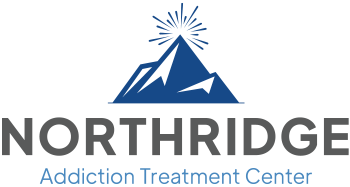Tramadol Overdose: Symptoms and Treatment

Tramadol is a synthetic opioid pain reliever commonly prescribed for managing moderate to severe pain. It helps with kinds of pain, like pain after surgery, long-lasting pain, and pain from sudden injuries.
Tramadol is a type of opioid. It attaches to opioid receptors in the brain and spinal cord. This changes how the body perceives and manages pain.
While effective, Tramadol carries significant risks, including the potential for overdose, dependency, a range of adverse effects, and opioid addiction.
What Is Tramadol?
Tramadol is a prescription medication classified as an opioid painkiller used for the relief of moderate to severe pain. Unlike many traditional opioids, Tramadol has a dual mechanism of action.
It works by attaching to brain receptors like other opioids for pain relief. It also stops the reuptake of serotonin and norepinephrine. These neurotransmitters help with pain and mood.
This unique combination enhances the pain relief provided by Tramadol. However, it also increases the risk of side effects such as serotonin syndrome. This risk is higher when Tramadol is taken with other medications that impact serotonin levels. Tramadol is available in immediate-release and extended-release forms.
This provides flexibility in dosing based on the patient’s pain management needs. The immediate-release form works quickly to relieve pain, while the extended-release form provides longer-lasting relief. Patients can choose the form of Tramadol that best suits their pain management requirements.
Tramadol Side Effects
Tramadol can have different side effects, depending on how much you take, how long you take it, and your personal health factors.
Common side effects include:
- Nausea and vomiting
- Constipation
- Dry mouth
- Dizziness
- Drowsiness
- Headaches
- Confusion
- Slow or shallow breathing
- Fluctuations in blood pressure and heart rate
These issues can lead to decreased oxygen levels in the body. This is especially worrying when Tramadol is taken with alcohol or benzodiazepines, as it can make the effects worse.
Tramadol can also cause serotonin syndrome, a dangerous condition. Symptoms include confusion, fast heart rate, high blood pressure, and high body temperature. These effects often depend on the dose and can sometimes be managed with dietary changes or additional medications.
Serotonin syndrome can be life-threatening. Tramadol can raise the chances of having seizures. This is more likely to happen with higher doses or in people who have epilepsy or other seizure conditions.

Risk of Overdosing on Tramadol
Overdosing on Tramadol is a serious concern and can occur for several reasons. This means taking more than recommended, mixing with other depressants, or using it differently than the doctor said.
People who have substance use disorders are at higher risk of overdose. This also applies to people who are unaware of the dangers of combining Tramadol with other substances. Mixing Tramadol with other substances can increase the risk of overdose.
Tramadol can be risky for people with liver or kidney problems, even in small doses. This is because it can affect how the body processes and eliminates the drug.
Mixing Tramadol with alcohol, opioids, or benzodiazepines is risky because they all affect the brain and nervous system. This combination can increase the risk of breathing problems, coma, and even death. It is important to avoid mixing Tramadol with these substances to prevent serious health complications.
Age, weight, overall health, and tolerance levels are important factors that can affect the risk of overdose. Elderly patients and those with existing health issues may be at higher risk of negative effects from Tramadol. This includes the risk of overdose, even with lower doses.
Signs of Tramadol Overdoses
Recognizing the symptoms of a Tramadol overdose is crucial for timely intervention and effective treatment. Symptoms of an overdose of Tramadol can vary greatly. It depends on how much was taken, the person’s tolerance, and if other substances were also used.
Symptoms can vary in severity and impact different parts of the body, like the brain, lungs, heart, and stomach. They can be mild or serious.
Central Nervous System Depression
One of the primary concerns during a Tramadol overdose is central nervous system (CNS) depression. This condition occurs when the brain’s activity slows down, leading to symptoms such as:
- Drowsiness: Initially, a person may experience extreme drowsiness, making it difficult to stay awake. This can progress to deeper levels of unconsciousness.
- Confusion and Disorientation: As the overdose progresses, confusion and disorientation can occur, with people experiencing difficulty thinking clearly or understanding their surroundings.
- Unresponsiveness: In severe cases, the person may become completely unresponsive or slip into a coma. This state of unresponsiveness is a medical emergency that requires immediate intervention.
- CNS depression is dangerous because it can affect important bodily functions, make breathing difficult, and cause drowsiness.
Respiratory Depression
Respiratory depression is one of the most life-threatening symptoms of a Tramadol overdose. It occurs when breathing becomes slow, shallow, or irregular, which can lead to:
- Hypoxia: A condition where the body is deprived of adequate oxygen. Hypoxia can cause cyanosis, where the skin and lips turn bluish due to lack of oxygen.
- Apnea: In severe cases, the person may stop breathing entirely (apnea), which can be fatal if not treated immediately.
The risk of respiratory depression increases significantly when Tramadol is combined with other central nervous system depressants, such as alcohol, benzodiazepines, or other opioids. This combination can potentiate the effects of each substance, leading to a greater risk of severe respiratory complications.
Cardiovascular Symptoms
Tramadol overdose can also affect the cardiovascular system, leading to:
- Irregular Heart Rate: Overdosing on Tramadol can cause arrhythmias, which are irregular heartbeats that can range from being too slow (bradycardia) to too fast (tachycardia).
- Blood Pressure Fluctuations: Blood pressure may become dangerously high (hypertension) or low (hypotension). Both extremes can be harmful; hypertension increases the risk of stroke, while hypotension can lead to shock.
- Cardiac Arrest: In severe cases, the combination of arrhythmias and blood pressure issues can lead to cardiac arrest, a condition where the heart stops beating effectively, requiring immediate emergency response.
Gastrointestinal Symptoms
The gastrointestinal system is also commonly affected by a Tramadol overdose. Symptoms may include:
- Nausea and Vomiting: These are among the most common symptoms and can contribute to dehydration if severe.
- Abdominal Pain: Pain in the abdomen may occur, possibly due to the effects of the drug on the digestive tract.
- Constipation: Although typically a side effect of chronic use, constipation can be exacerbated during an overdose.
Neurological Symptoms
Tramadol’s impact on the brain can also lead to neurological symptoms, which are often severe and require immediate attention:
Seizures: Tramadol can lower the seizure threshold, making seizures more likely, especially at high doses. These seizures can be life-threatening and require prompt medical intervention. The risk of seizures is increased if the person has a history of epilepsy or if Tramadol is taken with other medications that also lower the seizure threshold.
Serotonin Syndrome: When Tramadol is combined with other drugs that increase serotonin levels, such as certain antidepressants, there is a risk of serotonin syndrome. This condition is characterized by symptoms such as:
- Agitation and restlessness
- Confusion and hallucinations
- Rapid heart rate and high blood pressure
- Increased body temperature, sweating, and shivering
- Muscle rigidity, twitching, and loss of coordination
Serotonin syndrome can escalate quickly and become life-threatening, making it crucial to recognize and treat it promptly.
Behavioral and Psychological Symptoms
In addition to physical symptoms, a Tramadol overdose can also manifest with behavioral and psychological changes, including:
- Anxiety and Panic Attacks: Elevated levels of anxiety or panic can occur, especially if the person is aware of their overdose and fearful of the consequences.
- Paranoia: In some cases, people may experience paranoia or heightened states of suspicion and fear.
- Visual and Auditory Hallucinations: Hallucinations, or seeing and hearing things that aren’t there, may occur, especially in severe cases of overdose.
These symptoms can be distressing and complicate the clinical picture, making managing the patient’s care challenging.

Treatment for Tramadol Addiction at Northridge Addiction Treatment Center
For people struggling with Tramadol addiction and opioid use disorder, professional treatment is essential.
At Northridge Addiction Treatment Center, we treat the whole person using evidence-based treatments, methods, and therapies for substance use and other co-occurring mental health disorders. We focus on your immediate needs and create a treatment plan based on your situation and goals.
At NATC, we provide a family-like atmosphere surrounded by compassion and support. We serve healthy meals made by a chef and provide many amenities to help you get the most out of your stay.
Our caring, experienced, and licensed team will work with you every step of the way, helping you learn skills and tools to stay sober and handle triggers.
Our treatment specialists are ready to talk with you about your options. Contact us today to start your journey to healing and a meaningful recovery.
Find Meaningful Recovery
Our caring and compassionate specialists are eager to help you comfortably navigate this journey to recovery. Our individualized treatment plan, programs, and therapies may be a perfect match for you or your loved one. Let us assist you in living the happy life you deserve. It starts with a phone call.




